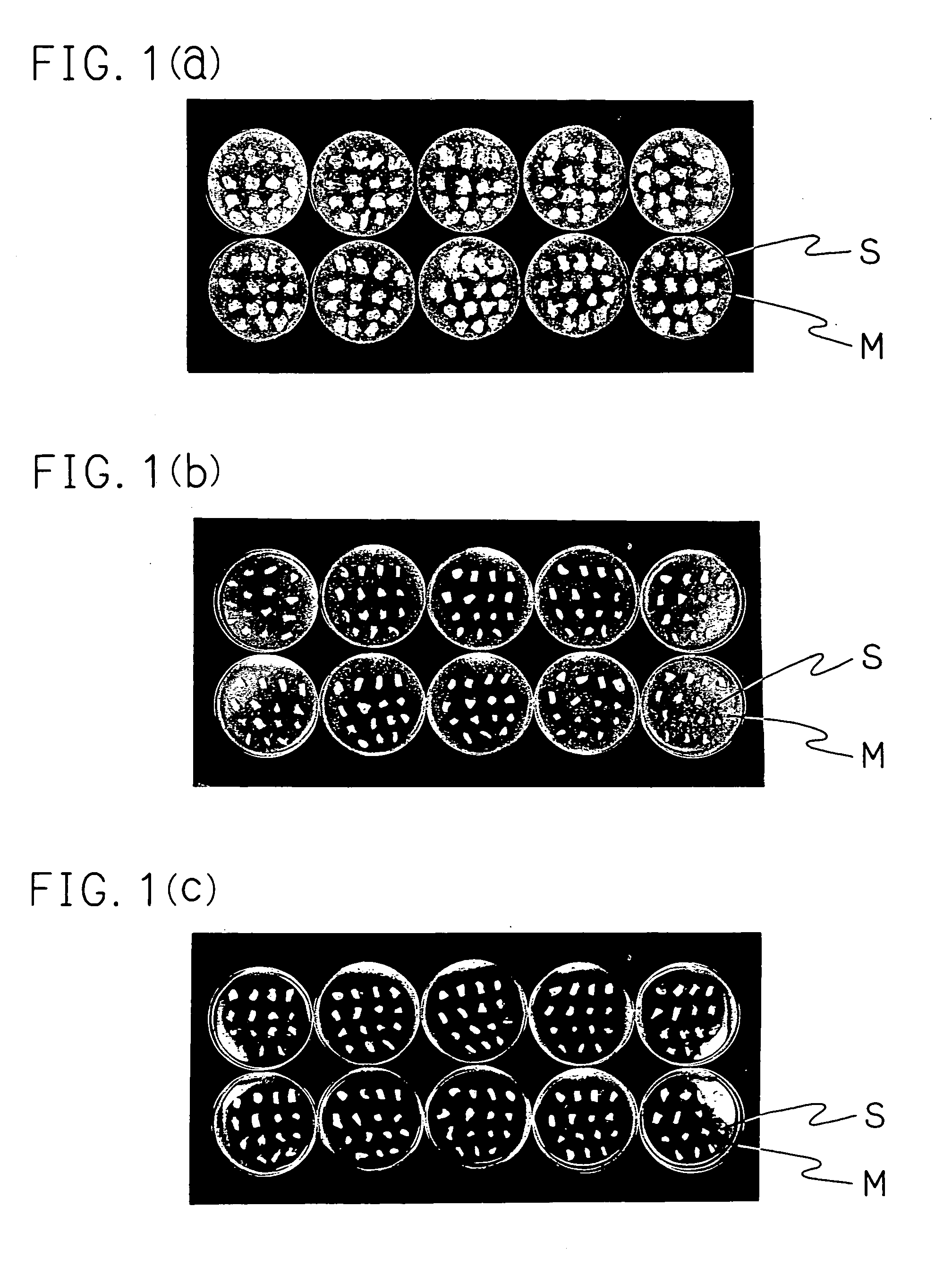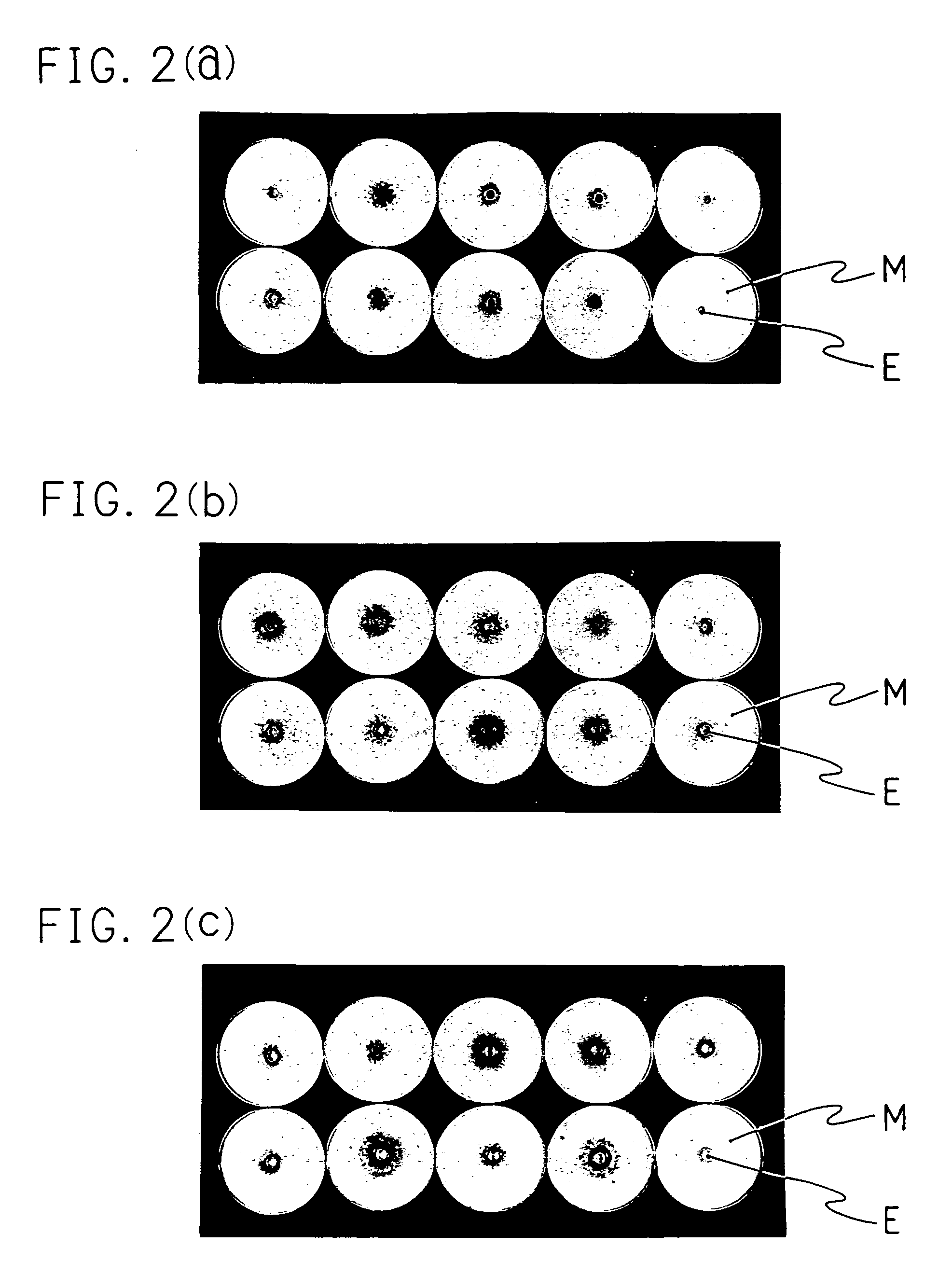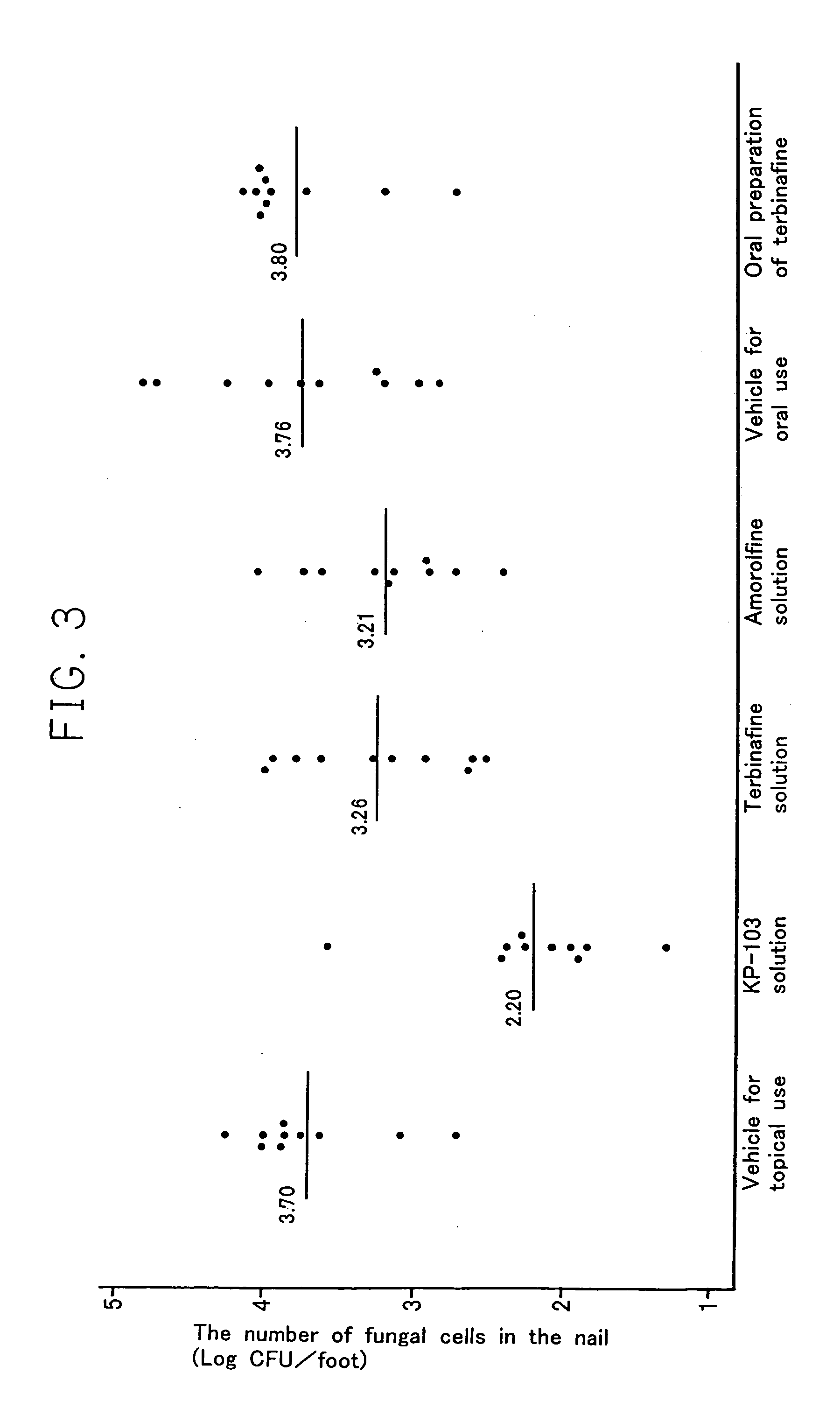Method for treating onychomycosis
a technology for onychomycosis and treatment methods, applied in the field of treatment methods for onychomycosis, can solve the problems of inability to accurately evaluate the effect of drugs, inability to cure tinea unguium completely, and patient stopping or taking drugs
- Summary
- Abstract
- Description
- Claims
- Application Information
AI Technical Summary
Benefits of technology
Problems solved by technology
Method used
Image
Examples
example 1
Determination of drug remaining in skin which has been already evaluated five days after the last treatment according to conventional method.
[0068]A model was prepared according to Comparative Example 1. Lanoconazole being a test compound was used for a therapeutic experience as 1% solution with the same vehicle as KP-103. For the infected control group without an application of a drug, the KP-103-treated group and the lanoconazole-treated group, 20 animals were employed, respectively. The two hind feet were excised from each animal five days after the last treatment in the same manner as in Comparative Example 1. A total of 20 light feet were used for an evaluation by the conventional method, and a total of 20 right feet were used in the present evaluation method.
[0069]The skin pieces of light foot were placed on 20 ml of Sabouraud dextrose agar medium containing Trichophyton mentagrophytes KD-04 strain (2×104 cells / ml) and the antibiotic substance described in Comparative Example ...
example 2
Determination of Remaining Drug after Removing Drug from Skin.
[0072]As Example 1, 20 right feet were excised from each animal five days after the last treatment, and sufficiently wiped with the cotton sweb containing alcohol. The planta was cut off from each foot. The skin mincced by a scissors was put into dialysis membrane (fractional molecular weight: 12,000–14,000, made of cellulose, available from VISKASE SALES Corporation) together with 4 ml of distilled water. Dialysis was carried out under 3 L of distilled water at 4° C. for 2 days. The dialysis water was changed twice a day 4 times in total. The content was transfer into a glass homogenizer. Thereto 4 ml double-concentration phosphate buffered saline containing 4% of trypsin derived from pig pancreas (available from BIOZYME Laboratories Limited) was added and the resulting mixture was homogenized. It was left at 37° C. for one hour and was filtrated with the two-ply gauze. The resulting filtrate was centrifuged. To a precip...
example 3
Detection of Viable Fungus in Skin and Evaluation of Drug Effect
[0076]To two mediums of Sabouraud dextrose agar medium (20 ml) containing the antibiotic substance described in Comparative Example 1 were applied 100 μl of the suspension from one right feet of each animals obtained in Example 2. After the cultivation was carried out at 30° C. for 10 days, the result is described as “fungus-negative” when a colony of fungus was not observed in two agar plates (detection limit: 10 CFU (colony forming unit) / feet). The number of fungus-negative feet was counted. On the other hand, 20 left feet were evaluated in the same manner as in Comparative Example 1. Table 2 shows the result of comparing the therapeutic effect evaluated by the conventional method with that by the present evaluation method.
[0077]
TABLE 2The number of fungus-negativefeet / Total number of infectedfeetConventionalPresent evaluationTest substanceMethodmethodInfected control 0 / 20 0 / 20KP-10319 / 2017 / 20Lanoconazole20 / 20 3 / 20
[00...
PUM
| Property | Measurement | Unit |
|---|---|---|
| temperature | aaaaa | aaaaa |
| temperature | aaaaa | aaaaa |
| weight | aaaaa | aaaaa |
Abstract
Description
Claims
Application Information
 Login to View More
Login to View More - R&D
- Intellectual Property
- Life Sciences
- Materials
- Tech Scout
- Unparalleled Data Quality
- Higher Quality Content
- 60% Fewer Hallucinations
Browse by: Latest US Patents, China's latest patents, Technical Efficacy Thesaurus, Application Domain, Technology Topic, Popular Technical Reports.
© 2025 PatSnap. All rights reserved.Legal|Privacy policy|Modern Slavery Act Transparency Statement|Sitemap|About US| Contact US: help@patsnap.com



